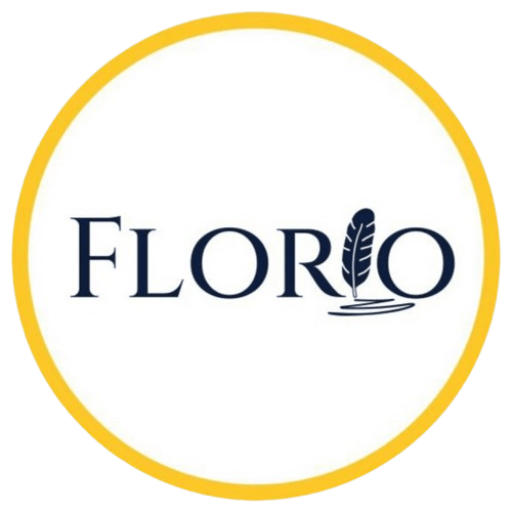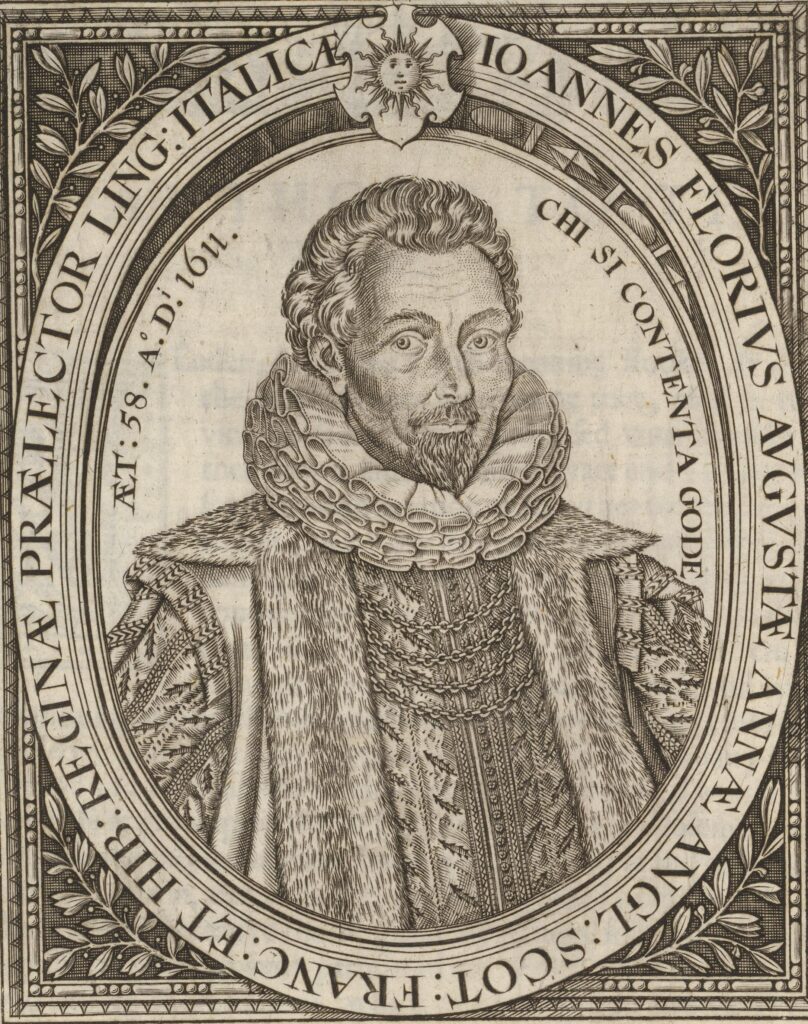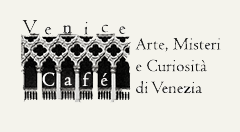From 1585 John Florio seems to have disappeared from the scenes. There is no mention of him previous to 1591, with four exceptions. Two are in connection with the christening of his children in 1588 and 1589. The third is a letter dated May 26, 1587 in which a certain Alexander Teregli refers to John Florio as his godfather. 1 We know, therefore, that in 1587 John Florio was in Cork with William Barnes. The fourth episode is connected with Philip Sidney’s Arcadia.
Arcadia: Florio, editor of literary texts
Fulke Greville, who knew Florio after the period at the French Embassy and La Cena delle Ceneri, appointed him as the “over-seer” of his manuscript copy of Sir Philip Sidney’s Arcadia, probably in collaboration with Matthew Gwinne. Philip Sidney, John’s friend, patron of Giordano Bruno and a participant in La Cena delle Ceneri, completed the first version of Arcadia, normally referred to as the Old Arcadia, between 1577 and 1580. The Arcadia was one of the most popular English romances of the seventeenth century, testifying to Sidney’s inimitable abilities. He started revising it in 1584 but was interrupted by an expedition to the Netherlands in 1585. Unfortunately, Sidney died during a battle on October 17, 1586, at 31 years old. The shock of Sidney’s death did not prevent Greville from stopping the unauthorized publication of his work.
The Old Arcadia vs The New Arcadia
As a result, Greville’s manuscript, which preserved Sidney’s partial revision, was used as copy-text for what was going to be known as 1590’s edition of the Old Arcadia. 2 Florio showed a remarkable instinct as an editor, and contrary to Hugh Sanford, the ‘over-seer’ of the 1593 edition of The New Arcadia, commissioned by Sidney’s sister, Mary Herbert, Countess of Pembroke, Florio published only those books which Sidney had managed to revise. Frances Yates remarks on the exceptional editorial sensitivity displayed by Florio:
“In short, he is comparing the printed Arcadia with The Old Arcadia [..] and like modern critics, he decided in favour of the latter. […] Thus Florio, a contemporary is at one with the best modern critics on this point, and I think he should take some credit for it.” John Florio, The Life of an Italian in Shakespeare’s England, 1932, Cambridge University Press, p. 202-3. Yates, F.
Hugh Sanford reproposed to the Countess of Pembroke, sister of Sidney, a new edition of Arcadia, and published it in 1593. The literally quarrel between Florio and Sandford didn’t stop, as Florio mentioned him in A Worlde of Wordes (1598) as the man who in 1591 made of the first letter of his surname (F.) a nickname “as if I had been his brother”:
“But my quarrell is to a tooth-less dog his name is HS. (…) This fellow, this H.S., reading (…) under my last
Epistle to the reader I.F., made a familiar word of F. as if I had been his brother.” – A Worlde of Wordes, John Florio.
John Florio, in his translation of Montaigne’s Essays, (1603) called this composite edition “that perfect-vnperfect Arcadia, which all our world yet weepes…[that Sidney] lived not to mend or end it: since this end wee see of it; though at first above all, now is not answerable to the precedents”. Florio’s contribution in the publication of Arcadia was fundamental enough that current critics recognize his publication of the Arcadia an excellent, artistic work, clearly superior to the one curated by Sanford.
John Florio vs Hugh Sanford
Hughes Sanford, secretary of the Pembroke family could not accept that Florio could access tasks as relevant as the care of a fundamental book like the Arcadia and began a dispute which saw Florio publicly replying in 1598 in A Worlde of Wordes. The opposition which the Elizabethan translators met with from some quarters was a real danger. And among them, Florio was the most famous and successful. The publication of the Arcadia curated by Florio in 1590 generated a pandemonium that reverberated even in the publication of his 1591 Second Fruits. It is not a coincidence that in his Second Fruits he referred to his enemies as dangerous people with “a knife at command to cut my throat.” Despite the several threats he received, by 1590 John Florio started a new career as editor of literal texts.
Florio’s Prognostication manual
In 1591 behind the name “I.F.”, John also translated for John Wolfe Perpetuall and naturall prognostications of the change of weather, a small pamphlet which contained various tokens of foul, fair and calm weather and which was successful enough to be reprinted in 1598. 3 But to some of his contemporaries, John appeared as a newcomer, a social climber, and even more when he officially began tutor of Henry Wriothesley, one of the most important and influential patron in the literal and theatrical world.
Henry Wriothesley: John Florio’s patron
It’s not certain when John Florio took the role of tutor to Henry. However, he dedicated A World of Words (1598) to the young Earl. In the preface, he confessed that had lived “some years” in his house, which proves that between late 1580s and early 1590s he became tutor of Henry Wriothesley, Third Earl of Southampton.
In that period, a new generation of patrons had grown up. Leicester, Walsingham and Sidney were dead, while brilliant young men, like Essex and Raleigh stood up. Elizabethan literature lived the most fertile and brilliant phase. The sonneteering fashion was in full swing, journalism was just born. Least but not last, Marlowe and the university wits were creating a new drama. We find Florio installed, as usual, at the heart of the most interesting of the new groups. 4
John Florio: tutor of Henry Wriothesley & The Earl of Rutland
t has been suggested that Lord Burghley was responsible for Florio’s appointment to the young Earls of Rutland and Southampton. Both were his wards, and he needed a trustworthy person close to them. Florio’s entrance into this brilliant literary circle closely associated with the drama, marks a very important stage in his career. It firmly established his social position and his reputation. However, it also exposed him to further and more violent attacks such as those of H.S., Eliot, Nashe, and others. 5
John Florio: the dedication to Henry Wriothesley in “A World of Words”
When he published his dictionary in 1598, John Florio dedicated his laborious work to Henry:
“In truth I acknowledge an entyre debt, not onely of my best knowledge, but of all, yea of more then I know or can, to your bounteous Lordship most noble, most vertuous, and most Honorable Earle of Southampton, in whose paie and patronage I have lived some yeeres; to whom I owe and vowe the yeeres I have to live. But as to me, and manie more the glorious and gracious sunne-shine of your Honor hath infused light and life: so may my lesser borrowed light, after a principall respect to your benigne aspect, and influence, afforde some lustre to some others.”
John Florio, A Worlde of Wordes, The Epistle Dedicatorie, 1598.
In 1594 John Florio was residing at Titchfield with the young Earl. The Southampton had devoted himself to Italian studies, both in literature and language. Thanks to Florio we know that Henry Wriothesley, along with the Earl of Rutland, were intended to travel to Italy. In the “Epistle Dedicatorie” he explained:
I might make doubt, least I or mine be not now of any further use to your selfe-sufficiencie, being at home so instructed for Italian, as teaching or learning could supplie, that there seemed no need of travell: and nowe by travell so accomplished, as what wants to perfection?
John Florio, A Worlde of Wordes, The Epistle Dedicatorie, 1598.
It is also plausible that Florio’s tutorage to the two young Earls must have provided a preparation for their travel to Italy. 6
Henry Wriothesley: an artistic patron
Young, rich and beautiful, Henry Wriothesley was very keen on literature and specially drama. On February 28 1588 he was a spectator of a comedy played at Gray’s Inn. In that occasion, most of the noblemen are recorded to have been present: the Earls of Warwick and Leicester (Florio’s patron in First Fruits), the Earl of Ormond, Lord Burleigh, Lord Gray of Wilton, and others. The misfortunes of Arthur written by Thomas Hughes was acted by 8 members of the Society before the Queen at Greenwich, and the next day Southampton was admitted member of Gray’s Inn introduced by his guardian William Cecil.
Henry Wriothesley, George Chapman and Barnabe Barnes
In those fervent years for the theatre, aspirants crowded round the brilliant young nobleman, bringing their poems. John Florio’s pupil, Barnabe Barnes, wrote a collection of poems, sonnets and madrigals called Parthenophil and Parthenophe (1592). He also included a sonnet to Southampton, asking for the same advantage of Florio. It would seem that George Chapman had striven to win Southampton’s notice by this time. In 1598 Chapman published the first two and other five Books of his Translation of the Iliads and dedicated them to the Earl of Essex. Some years later – not earlier than 1609 – he published his Homer…in twelve Bookes of his Iliads, dedicated to Prince Henry. At the conclusion he added fourteen sonnets to likely patrons. Among these is included Henry, writing a sonnet that refers to Southampton’s interest in colonisation.
Henry Wriothesley vs Thomas Nashe
On 27 June 1594 Thomas Nashe published his picaresque novel, The Unfortunate Traveller, and dedicated it to Southampton. He termed him “A dere lover and cherisher … as well of the lovers of Poets, as of Poets themselves”. When Henry saw the dedication, he was deeply displeased and told Nashe that he would not have it. Later, Nashe will angrily admit:
“Amongst their sacred number I dare not ascribe myself, though now and then I speak English…”.
On analysis of the evidence, it becomes clear that this relationship had turned sour. Also, the whole of the address was a disrespectful jibe at Southampton. Nashe wanted to embarrass the Earl, not praise him. Specifically, his words on loving poets as well as their lovers point to scandal not eulogy. Nashe tried again with The Choice of Valentines but its contents were even more distasteful to Southampton, who subsequently banished him.
John Florio vs Thomas Nashe
Author Arundel Del Re, in the Introduction to Florio’s First Fruits in a facsimile reproduction he published in 1936, wrote that “Evidences recently brought forward, shows that he [John Florio] was also involved in the Harvey-Nashe quarrel.” The patronage that Southampton gave to Florio and refused to Nashe is most likely one of these reasons. The decade-long literary quarrel Florio had with Thomas Nashe can be traced from 1589 through to 1600 in almost everything the two men published.
Henry Wriothesley & The Danvers Case
As he clearly pointed out in the reference letter written before Castelnau’s departure, John Florio wasn’t just a mere language tutor. He, in fact, wrote letters for him and became Henry’s confidant and trusted friend. A famous episode showed his ‘resolute’ attitude when Wriothesley seeked help from him for an urgent, delicate case. On Friday 4th October 1594, in fact, John Florio took part in the famous Danvers case, backing Henry’s friends in their efforts to escape. Henry Danvers and Sir Charles Denvers were the two elder sons of Sir John Danvers of Dauntsey. Both close friend to Henry Wriothesley, they committed a crime in Wiltshire.
According to one account, Henry Long was dining in the middle of the day with a party of friends in Corsham, when Henry Danvers, followed by his brother Charles and a number of retainers, burst into the room, and shot Long dead on the spot. According to another account, Henry Long had challenged Charles Danvers, that he was pressing an unfair advantage and had his arm raised to kill. When Henry Danvers thrust himself between to ward off the blow, was wounded in the act, and striking upwards with his dagger killed Henry Long accidentally.
The fugitives arrived at 8/9 in the morning of Saturday the 5th at Whitley Lodge near Titchfield, where Thomas Dymock lived, and there they remained till Tuesday morning. The Danvers’ servant, Gilbert Scott, stayed at Titchfield secretly for 10 days and was sent post haste to London and to the various ports, to secure a passage for France. On Sunday 6th Henry remained at home for his 21th birthday. On Monday the Earl went to Calshot Castle. Master Lawrence Grose, Sheriff, was informed on the murder, and on the evening of October 12th the following scene took place at Itchen’s Ferry:
“The said Grose, passing over Itchen’s Ferry with his wife that Saturday 12th, one Florio an Italian, and one Humphrey Drewell a servant of the Earl, being in the said passage boat threatened to cast Grose overboard, and said they would teach him to meddle with their fellows, with many other threatening words.”
Charlotte Carmichael Stopes
The Denvers brothers fled and went in Whitley Lodge between 8 and 9 o’ clock where Thomas Dymock, Henry’s bailiff, resided. The cook made them food and on Henry came to the Lodge on Monday night, supped with them, spent the night and departed with them two hours before day next morning. He managed to get them shipped over to France.
John Florio had a close relationship with Henry Wriothesley at least until 1603, when Henry’s family, Florio and other friends of the Southampton, flocked to him on his releasement from the Tower. 7 .At the close of the sixteenth century, Resolute John Florio was on intimate terms not just with Henry Wriothesley, but with all the chief literary men of London and their patrons.
Bibliography
Chiari, S. (2019). Shakespeare’s Representation of Weather, Climate, and Environment: The Early Modern ‘Fated Sky’. Edinburgh: Edinburgh University Press.
Del Re, A. (1936). Florio’s First Fruites: Facsimile Reproduction of the Original Edition II, Introduction and Notes.
Höfele, A. (2005). Renaissance Go-Betweens: Cultural Exchange in Early Modern Europe. Amsterdam: Amsterdam University Press.
Longworth, C. C. (1921). Giovanni Florio, Un Apôtre de la Renaissance En Angleterre a l’Époque de Shakespeare. Paris Payot.
Stopes, C. C. (1922). The Life of Henry, Third Earl of Southampton: Shakespeare’s Patron. Cambridge: Cambridge University Press.
Yates, F. A. (1934). John Florio: The Life of an Italian in Shakespeare’s England. Cambridge: Cambridge University Press.
Notes
- TNA SP 46/125/fo 163, 163d. The description of the letter written in Italian is as follows: “Alexander (?) Teregli to his godfather, John Florio, in Cork: meeting with William Barnes, the lord mayor’s son; Booll’s and Woods’ kindness to Florio. Regrets Florio cannot be with him at Whitsun; is to stay with Cavalier Dimock; London; 26 May 1587; Italian; Sealed.”
- Höfele, A., Renaissance Go-Betweens: Cultural Exchange in Early Modern Europe, 2005, p. 112
- Chiari, S., Shakespeare’s Representation of Weather, Climate and Environment: The Early Modern ‘Fated Sky’, 2019, Edinburgh University Press, p. 11
- Yates, F. A., John Florio, the life of an Elizabethan in Shakespeare’s England, 1934, p. 124
- Del Re, A. Florio’s First Fruites, Facsimile Reproduction of the Original Edition II, Introduction and Notes, 1936, p. XVI
- Stopes, C.C. The Life of Henry, 1922, Cambridge, p. 93.
- Del Re, A. Florio’s First Fruites,cit 261




